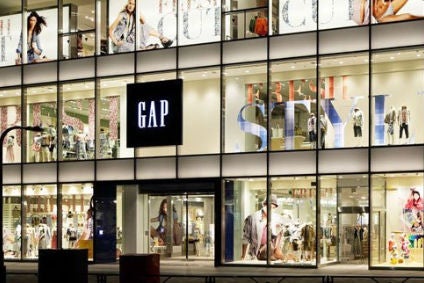
Specialty apparel retailer Gap Inc has set out some of the ways its brands are able to significantly cut down on lead times – with some as quick as eight weeks.
The secret is in its supply chain, says the Gap, Banana Republic and Old Navy owner, adding brands need to look here to “drive value by strategically using levers in flexibility and speed to respond to consumers.”
Check out Gap Inc’s top tips for using scale to speed up supply chains.
Fabric platforming and positioning
Fabric platforming is the use of a common fabric across multiple styles for multiple seasons. With fabric positioning, sourcing teams partner with mills and vendors to position raw materials at various stages in the supply chain. This includes yarns, greige fabric (an unfinished fabric that hasn’t been bleached or dyed), dyed fabric, and blank garments. The further up the supply chain raw materials can be positioned the greater the flexibility to customise garments for the consumer. Speed advantage is achieved by positioning raw materials further downstream in the supply chain. If Old Navy Rockstar denim is selling out across North America, by using platformed fabrics and positioned greige fabric, the product can be restocked in stores in “a matter of weeks.”
Currently, more than half of Gap Inc product uses platformed fabric.
How well do you really know your competitors?
Access the most comprehensive Company Profiles on the market, powered by GlobalData. Save hours of research. Gain competitive edge.

Thank you!
Your download email will arrive shortly
Not ready to buy yet? Download a free sample
We are confident about the unique quality of our Company Profiles. However, we want you to make the most beneficial decision for your business, so we offer a free sample that you can download by submitting the below form
By GlobalDataCo-location and proximate sourcing
Where there’s cotton, there’s a mill, says Gap Inc. Careful selection of countries of origin for each brand and product can allow for optimised speed for retail markets. This can be achieved in two ways.
- Co-location refers to working with vendors who cut and sew garments in the same country where raw materials are grown and processed. The result is transit time between mills and garment vendors is reduced.
- Proximate sourcing refers to the proximity between the manufacturing country and the final retail destination. Growing partnerships with vendors in Central America, for example, can decrease the shipping time to North America. Doing more business with mills and vendors in Portugal and Turkey results in lower shipment times to consumers in Europe.
Strategic partnerships
A diverse vendor base in multiple countries can help optimise cost, speed, quality, flexibility and innovation. The retailer says such partnerships allow it to quickly provide the latest trends to customers, while positively impacting communities where it does business through programs like Pace and the Better Cotton Initiative.
“The more Gap Inc integrates responsive capabilities throughout the supply chain, the better we can engage and serve our customer and compete in the future of retail.”
Gap Inc owns the brands Gap, Intermix and Athleta also, and, at the end of September, launched men’s apparel brand Hill City, which uses fabrics made from renewable and recycled fibres.



